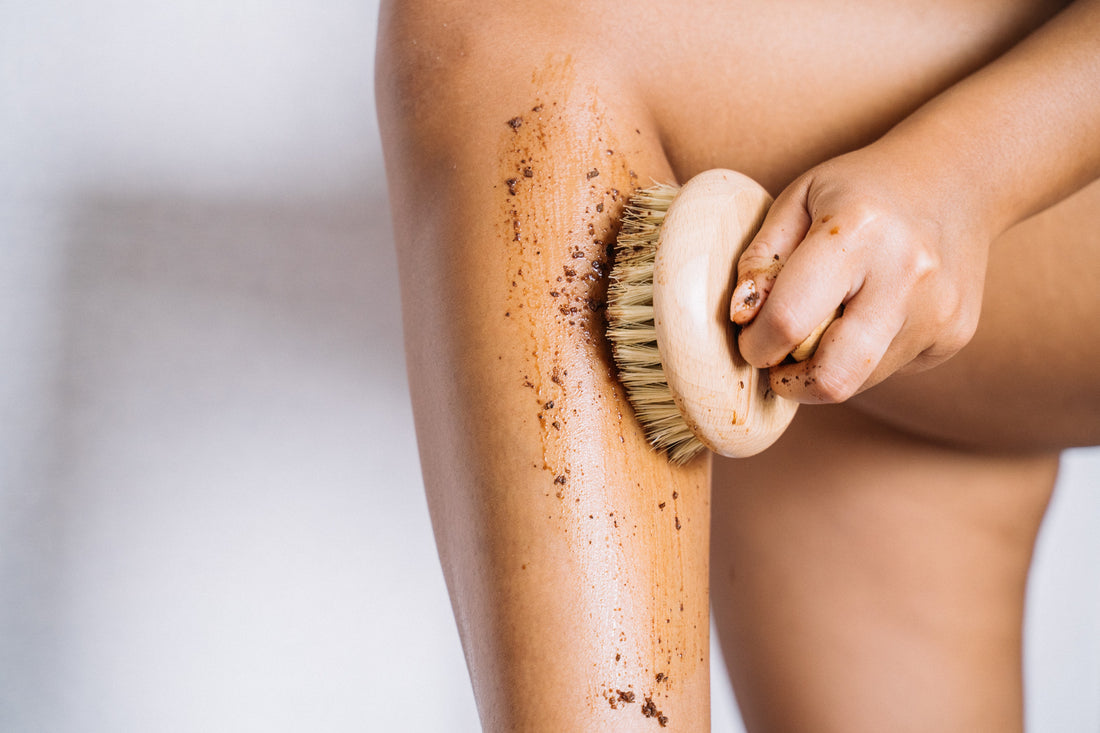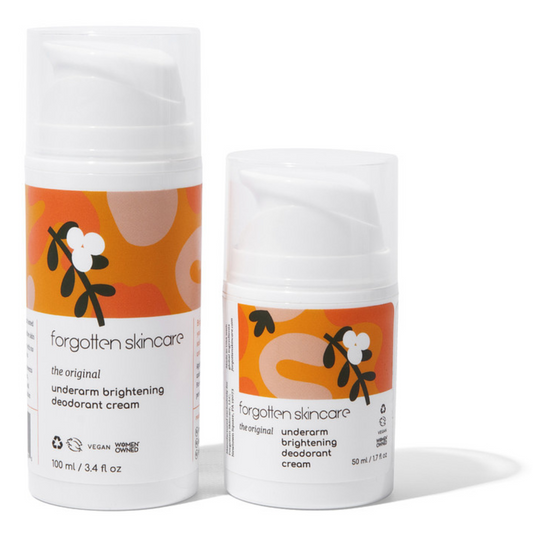
Yes, You Should Be Exfoliating Your Body
For soft, luminous skin on your body you use lotion, right? Well, what if we told you there’s a step beyond moisturizing that can enhance the appearance, feel and health of your skin: exfoliation.
You may already have an exfoliating step in your facial skin care routine, but the body is often overlooked. And while you may be tempted to just use that fancy peeling serum on your shoulders, arms and legs, the skin on your body is notably different from the skin on your face and decolletage.
So don’t worry, we’re here to help you exfoliate your body the right way.
What is exfoliation?
Exfoliation is the process of removing the dead skin cells that accumulate at the surface of the skin, either by physically sloughing them off or chemically dissolving them. This turnover process is a natural part of the skin cycle, and exfoliation just helps speed things along.
Dead skin cells can make your skin feel rough and look dull, so exfoliating them away will help you maintain soft, luminous skin. But exfoliation can help with so much more than just aesthetics, too.

What are the benefits of exfoliating your body?
When done properly, exfoliation can have an impact on your skin’s appearance, feel and function:Types of exfoliation
When it comes to exfoliating, there are two types to help your skin shed those dead skin cells: physical and chemical. While both types are effective exfoliators, they each work slightly differently and therefore can be beneficial to varied skin types and conditions.
It’s worth noting that the skin on your body is different from the skin on your face - it is usually less sensitive as it’s thicker, but contains fewer oil glands so is often more dry. It’s best to save those fancy facial serums and scrubs and opt for exfoliating products specifically targeted for the skin on your body
Whether you prefer physical exfoliants, chemical exfoliants or a combination of the two, it’s important to understand how they work to avoid any over-exfoliation and potential irritation.

Physical
How it works: Physical exfoliation works by manually scrubbing, buffing or scraping away the layer of dead skin cells on the surface of the skin. Your skin goes through some form of physical exfoliation naturally every day - even toweling off after a shower is a gentle form of physical exfoliation. To recognize physical exfoliants for your body, look for scrubs or tools that work to slough off that dead, dry skin.Examples: Physical exfoliating tools include dry brushes, loofahs, shower gloves, and even your razor. Exfoliating scrubs will often include an abrasive ingredient such as sugar, coffee, salt or walnut shells.
Best for: Physical exfoliation is a great all-over exfoliation technique for skin that is looking dull and feeling dry. It works only on the surface of the skin, and because you can feel the process means you’re not likely to overdo it - important for sensitive skin!
Chemical
How it works: Chemical exfoliation relies on active acids or enzymes to dissolve the dead skin cells on the surface of the skin. If you’ve ever enjoyed the skin-smoothing effects of a yogurt mask, you can thank the exfoliating properties of lactic acid. You can often spot chemical exfoliant products by looking for the words “peel” or “resurfacing”.Examples: Look for chemical exfoliant ingredients such as AHAs (glycolic acid, lactic acid), BHAs (salicylic acid) or fruit enzymes.
Best for: Because chemical exfoliants are able to penetrate the pore, they are more effective at treating skin concerns such as acne, keratosis pilaris or ingrown hairs. As well as dissolving dead skin on the surface, chemical exfoliants can help flush out clogged pores and help control bacterial imbalances on your body.
How to add exfoliation to your routine
How you exfoliate your body will come down to your skin type, concerns, and overall preference. Consider a body scrub or body wash that also contains chemical exfoliants - this combination of physical and chemical exfoliation will maximize the skin-smoothing benefits, leaving your skin soft and silky. Or if you prefer an after-shower ritual, try dry-brushing your body before applying lotion.Whichever method you choose is up to you, but remember that moderation is key. While scrubbing every day may be tempting, 2-3 times a week is enough. The goal is to aid your skin’s natural cell turnover without compromising the delicate moisture barrier.
Adding exfoliation to your body care routine is a simple step that will leave your skin feeling glowy and even. Whether you opt for a physical, chemical or combination exfoliator, you will notice in time that your skin looks, feels and even functions better.







